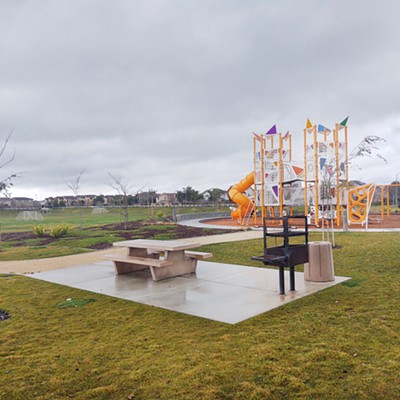Exploding railroad cars and what public coastal access really means were chief issues brought up at a July 29 scoping meeting that covered a proposed rail line expansion for the Phillips 66 oil refinery on the Nipomo Mesa.
Bill Henry, a project consultant brought in by San Luis Obispo County to help specifically with the Phillips 66 rail spur project, said all the input heard at the meeting would be considered as the county works through the environmental impact report.
The project would allow the company to ship in crude oil directly via railroad car and would include approximately 1.3 miles of new rail—capable of accommodating a train 80 cars long—and 0.7 miles of above-ground pipeline.
As far as the coastal access portion of the project is concerned, it’s more speculative than concrete, and will have its own special chapter in the report.
“The rail spur project and coastal access are two separate projects,” Henry told attendees. “We can’t look at [coastal access] on a project level because we don’t have all the details needed to really look at it.”
Coastal access is being included in the document because of a condition the county put on the project to look at the least environmentally impactful alternative to get to the dunes. Henry said once they determine the least impactful route, then county planners can look at what kind of access will be allowed and what the intensity of use would be.
Although the coastal discussion caused a bit of a stir with the crowd at the meeting, what really got them murmuring were questions about company and county intentions surrounding the project. More specifically, they asked: Why was the rail line expansion project proposed only a few months after the county approved a production increase for the facility, and why is the rail project’s environmental impact report being fast-tracked by the county? The report is expected to be completed by November, which is a quick turnaround for the document.
In February, Phillips 66 received county approval to increase throughput—crude oil coming in and product coming out of the refinery—from 44,500 barrels of crude oil per day to a little more than 48,000 a day. In May, the company approached the county about adding the new rail, the pipeline, a restroom facility, and an unpaved emergency vehicle access road from Highway 1.
Several of the Mesa residents who attended the meeting said they felt that the two projects were really one and the same.
Jim Anderson, a spokesperson for Phillips 66, told the Sun that the throughput project took four years to go through the county’s planning and approval process. He added that, in that time, the industry changed significantly.
Anderson said local production has dropped off in the last few years, while production elsewhere in North America has taken off. The rail extension would give the company an opportunity to bring crude oil in from all over the continent.
“We’re captive to the local production because we can only get crude in by pipeline,” he explained.
As far as concerns over increased production, county and company officials said the amount of oil processed at the facility would remain the same.
“If they’re going to increase shipments by rail, they’re going to decrease activities through the local pipeline,” county project manager Murry Wilson said at the meeting. “It’s just going to be a shift in where it’s coming from.”
Wilson said the project is being fast-tracked because Phillips 66 requested the quick turnaround, the county found a company willing to handle the environmental impact report in a short time, and the resources are available—Phillips 66 gave the county money to bring in a consultant on the project.
The 7,000 feet of proposed track would enable the refinery to process five trains’ worth of oil per week. Each train would have up to 80 cars, and every car can hold 500 barrels of crude. The project is expected to impact up to 50 acres, 27 of which would be in areas that are currently undisturbed.
The county asked residents to submit concerns over environmental impacts specific to the Mesa and to suggest proposed mitigation measures. Residents asked the county to look at potential impacts to the viewshed from Highway 1, lights, noise, vibrations, and endangered species.
Istar Holliday from the South County Advisory Council asked that the county consider local mitigation measures to make up for environmental impacts, “so we don’t have to suffer all the ills without any of the solutions.”
Comments for the environmental impact report can be submitted until Aug. 9.














